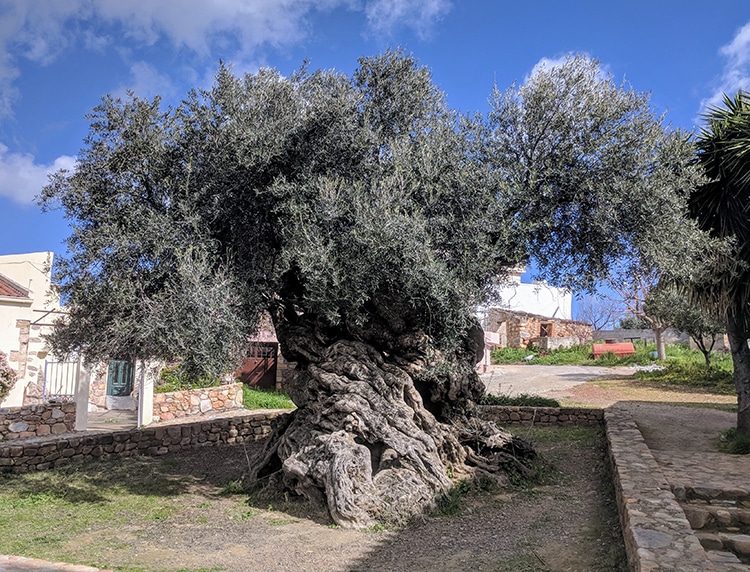The magnificent Olive Tree of Vouves in the village of Ano Vouves in Crete, Greece.
Their longevity means they see people, seasons, and even historical events come and go.
Some trees have seen more than others.

The magnificent Olive Tree of Vouves in the village of Ano Vouves in Crete, Greece. (Photo: Eric Nagle viaWikimedia Commons,CC BY-SA 4.0)
The Olive Tree of Vouves is thought to be thousands of years old.
Despite this impressive age, the living tree still produces olives for harvest.
Olives were beinggrown commerciallyon Crete at least 3,000 years ago.Olive oilfigured heavily in diets and literature.
The Vouves tree dates to this error of important production.
Isotope dating is not possible as the tree’s heartwood has decayed within its twisted 15-foot diameter.
However, its rings show it has been around for at least two millennia.
After all these years, one might expect the tree to be withered and dry.
However, cultivars (grafted plants) have enabled the tree to continue producing olives.
Its boughs adorned the head of winners at the 2004 Athens Olympic Games, an iconic return to tradition.
A Great Basin bristlecone pine (Pinus longaeva) in California is 4,854 years old.
These trees have survived wars, pandemics, droughts, and firestrue displays of resilience.